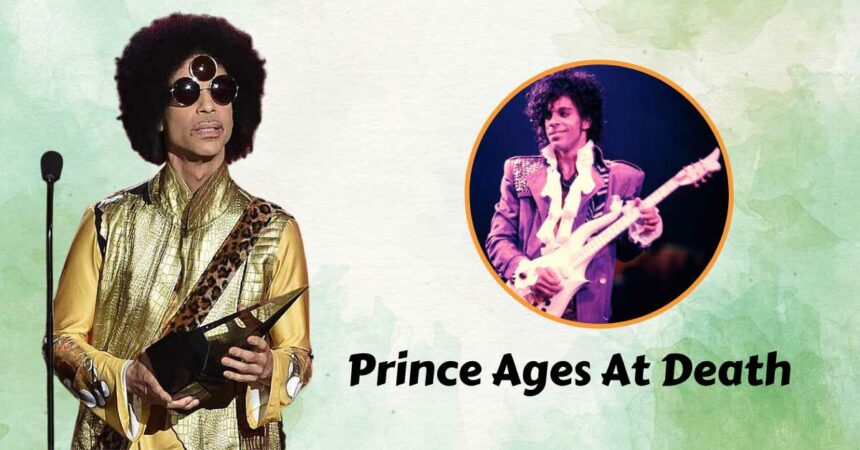The unexpected death of Prince, a legend in the world of rock and roll, on April 21, 2016, rocked the whole planet. At his residence in Chanhassen, Minnesota, the singer was discovered lifeless in an elevator. He had just turned 57 at the time.
The toxic levels of fentanyl in his system were confirmed by the postmortem. However, further inquiries raised other concerns, such as where the singer obtained the painkiller and why it was made to seem like a prescription medicine.
On the 21st of April, 2016 Death of the Prince, Aged 57
An unknown guy was discovered lifeless in an elevator at Paisley Park on April 21, 2016, according to a phone call received by emergency dispatchers in Minneapolis, Minnesota. The caller then indicated he thought the guy was dead and identified the deceased individual as Prince.
REMEMBERING PRINCE 💜 | Today marks 5 years since the death of legendary musician Prince. Prince died April 21, 2016, of an accidental fentanyl overdose at age 57. https://t.co/7ILxuyOcFZ pic.twitter.com/nKaeahmTIr
— News4JAX (@wjxt4) April 21, 2021
When first responders came, they discovered Prince lying in an elevator, just as had been described. The singer had been dead for at least six hours when he was discovered, and despite their best efforts, they were unable to revive him.
After 19 minutes, they proclaimed him dead on the spot. The autopsy that will identify Prince’s cause of death has already removed his corpse. Meanwhile, outside, a crowd of reporters and supporters were openly sobbing.
The singer died from a fentanyl overdose, according to the postmortem results. Extremely potent narcotic fentanyl is fifty times as powerful as heroin. The mystery was where Prince got it and whether or not he was misusing it on purpose.
Prince did have a drug problem before he passed away, but he wasn’t hooked on fentanyl. He was now participating in rehab for opiate use. Over the course of his life, Prince had been given a number of different painkillers in an effort to alleviate his chronic discomfort.
The singer’s hip had been giving him trouble ever since his operation to replace it in 2010, and it would continue to do so for the rest of his life.
His death was suspected to have been caused by fentanyl disguised as generic Vicodin, according to doctors. The singer’s sad death was ruled an accident after investigators discovered no signs of suicide or homicide.
Click here for the following links which provide other articles related to death:
- Paul Reubens Cause Of Death: For What Reason Was His Program Canceled?
- Robbie Robertson Death: The Band’s Guitarist Dies at 80!!
April 2016
In the last months of his life, Prince was well aware of his prescription medication issue. His tragic overdose was preceded by a second overdose only weeks before, this time on the flight back from an Atlanta event. The pilot made an emergency landing, and the singer was sent to the hospital, where naloxone was delivered. After obtaining the medicine, Prince recovered consciousness, despite being unconscious upon the plane’s landing.
He was urged to stay in the hospital by his doctors. Instead, despite medical advice, he decided to check out. Nonetheless, Prince had his team get in touch with Dr. Howard Kornfeld, an addiction expert, and schedule an appointment for Prince to begin treatment.
On April 22, 2016, Kornfield scheduled the first meeting. In reality, Kornfeld’s son, who was bringing Prince’s prescribed drugs to begin his addiction therapy, discovered his corpse the morning of his death. Sadly, it was already too late for the musician, as he died unexpectedly on April 21, a day before his scheduled medical appointment.
Before Prince’s Death
Prince’s growing addiction in the months leading up to his death received widespread attention from the media. The musician initially gained attention when he postponed a number of performances on his 2016 “Piano & a Microphone Tour,” which had begun in January of that year. His representatives issued a statement indicating the artist had the illness.
The April 14 performance in Atlanta, Georgia’s Fox Theatre was Prince’s last. He had just gotten over being unwell. The singer’s first overdose happened on the return flight, necessitating an emergency landing so he could be taken to the hospital.
The following days saw considerable publicity from his agents claiming he was still hospitalized for dehydration after a severe case of influenza. The singer’s addiction to opioids would remain secret until after his death. However, they were telling the truth: Prince apparently caught the virus and developed walking pneumonia.
Prince was seen out and about many times in the days before his death. He went on a bike ride in Chanhassen, Minnesota, the day after he had his first drug overdose. He went to a show at the Dakota Jazz Club on April 19.
A resident of the same Paisley Park building complex as him, he dropped in unexpectedly on a neighborhood dance celebration. When guests at the gathering asked if they might pray for Prince’s recovery, the musician assured them that he was well. According to partygoers, he was the life of the party, full of life, energy, and fun as well as showing off his brand-new guitar.
After His Death, There Were Investigations
The cause of Prince’s death was determined by an autopsy. The medical examiner determined the death was due to a fentanyl overdose, but the mystery remained unsolved.
The subsequent two-year probe would include a lawsuit filed by Prince’s heirs against his doctor, Michael Schulenberg. On the other hand, Schulenberg said that he never gave Prince fentanyl, although he did give him Percocet in the days before he passed away.
However, Schulenberg said that Prince’s agent lied to him and made it seem like they were going to use the drugs themselves. That is to say, Schulenberg said he was unaware of treating the late singer or facilitating his access to pain medication.
However, the real medication that killed Prince was not disguised as Percocet, suggesting that the musician obtained it illegally. Unfortunately, no information was uncovered via extensive research on the origins of the drug. Authorities questioned Prince’s medical staff as well as his pharmacy’s employees, but they came up empty.
Before Prince’s Death Funeral
Many others, including President Obama, have expressed their sadness over Prince’s loss. The singer’s music videos were shown exclusively on MTV, and SNL broadcast a special episode titled Goodnight, Sweet Prince, which included repeats of Prince’s previous appearances on the program.
A woman lays flowers at the gate of Buckingham Palace in London following announcement of Prince Philip’s death.
📷 Matt Dunham / AP pic.twitter.com/J5uzgXrSeH
— NBC News (@NBCNews) April 9, 2021
Nielsen data showed a worldwide surge in Prince’s music streams and downloads as mourning fans paid tribute. In honor of the late singer, landmarks throughout the globe were bathed in a purple light.
Following the autopsy’s conclusion, Prince’s body was cremated. They were interred in an urn that was 3D-printed to resemble Prince’s home in Paisley Park. The urn is still on exhibit in the building’s atrium.
There was no public tribute or funeral for the singer. Tyka Nelson, his sister, said that a small group of Prince’s Paisley Park acquaintances had gathered soon after his death to honor him in secret. Later that year, in October 2016, a more formal memorial was held.
However, Prince’s bones were not there, and neither were any members of his surviving family; Nelson said on her Facebook page that the family had decided that one memorial ceremony was enough. The Jehovah’s Witness Kingdom Hall in Minnetonka, Minnesota played host to the memorial service.
However, many of Prince’s famous friends and partners showed up there. His ex-wives Manuela Testolini and Mayte Garcia organized the party. The likes of Spike Lee, Gwen Stefani, and Larry King were all there at the exclusive party.




